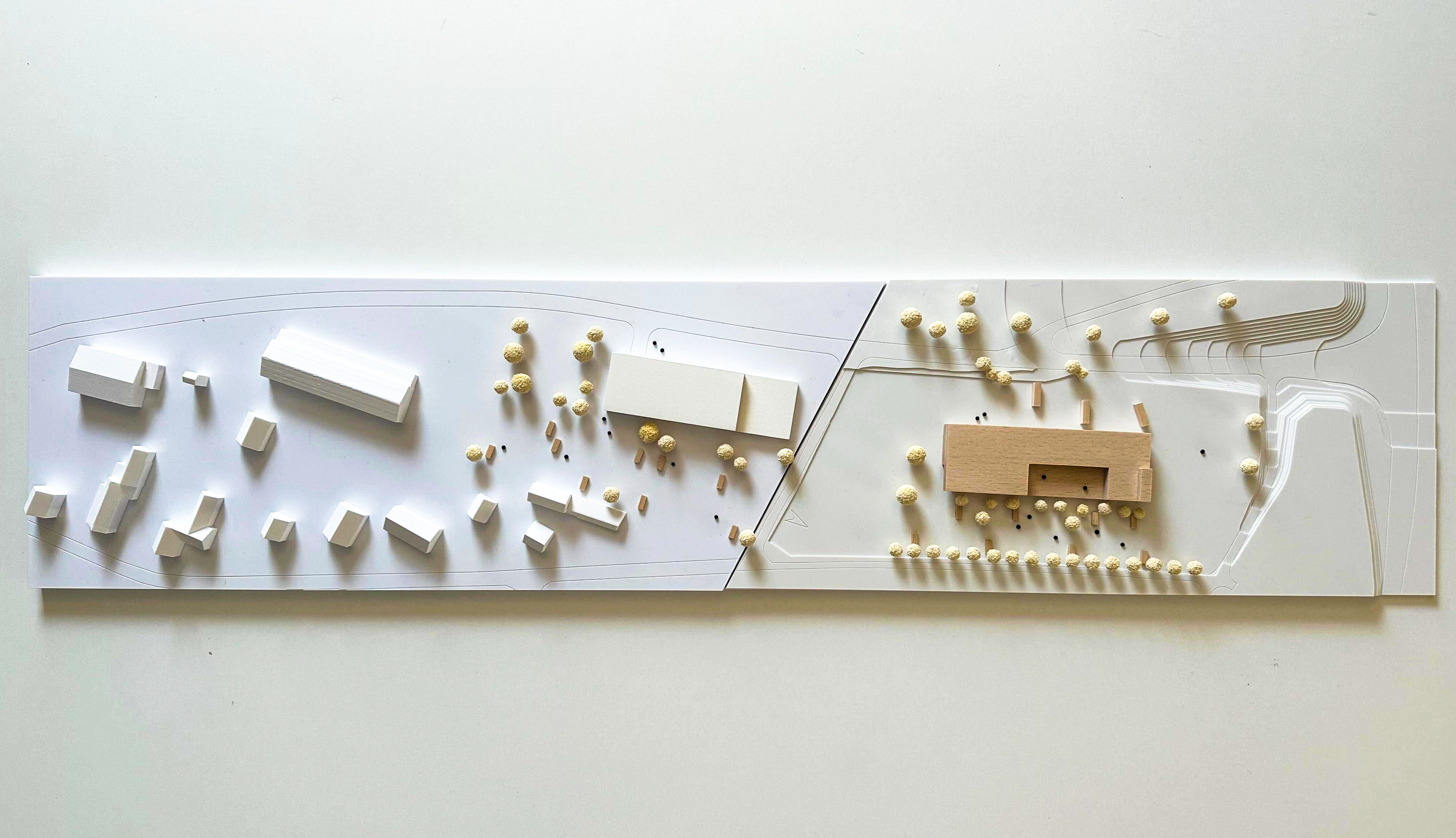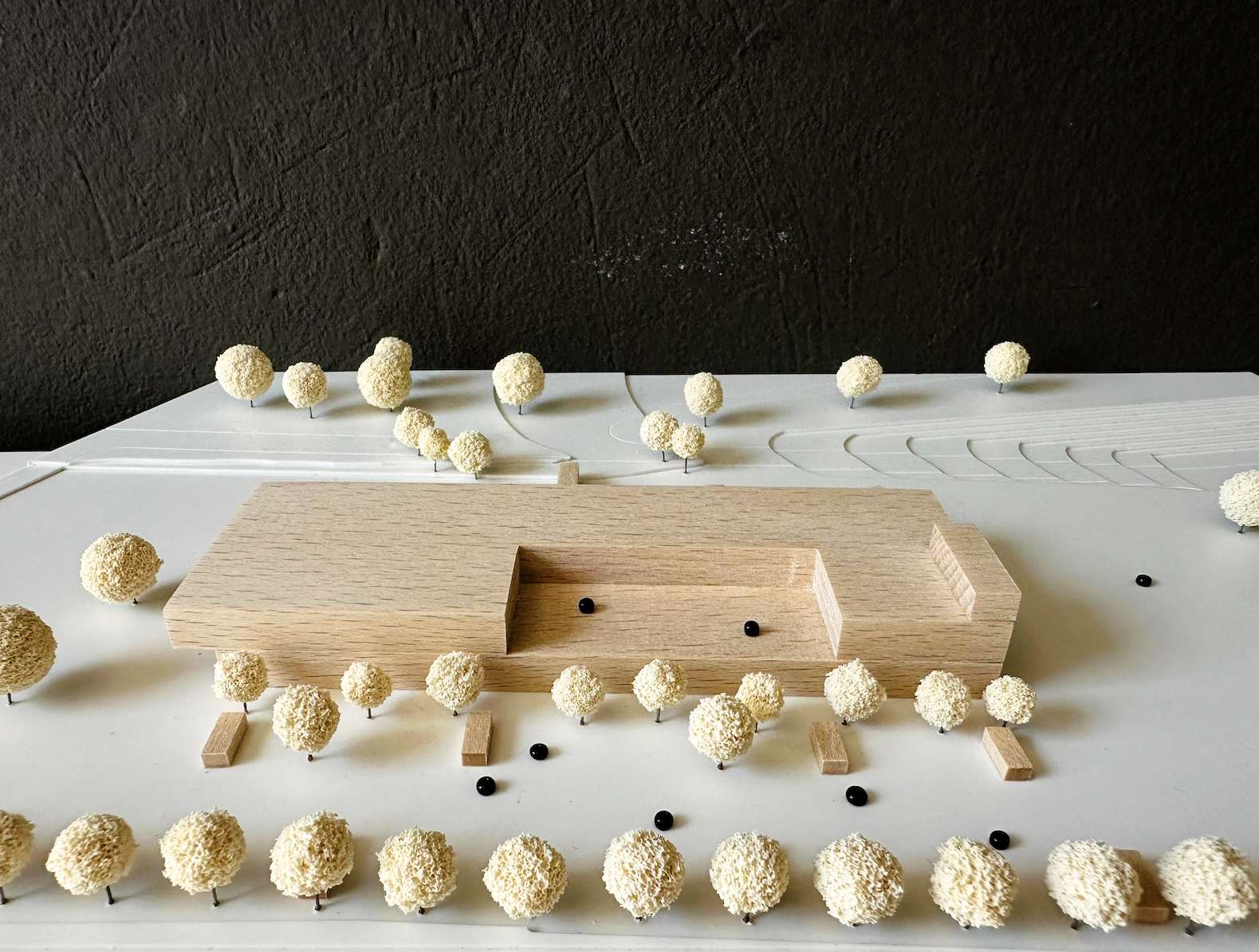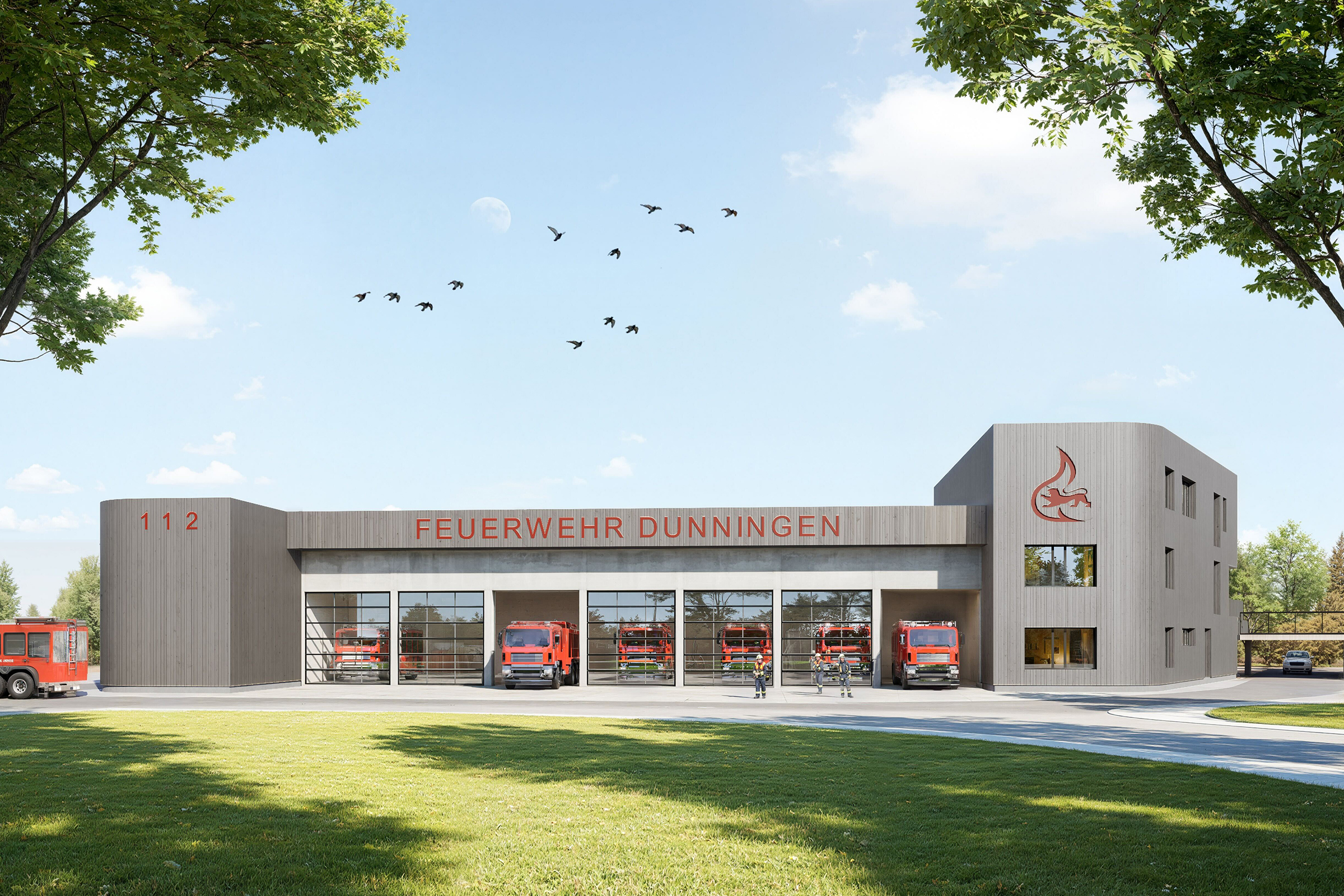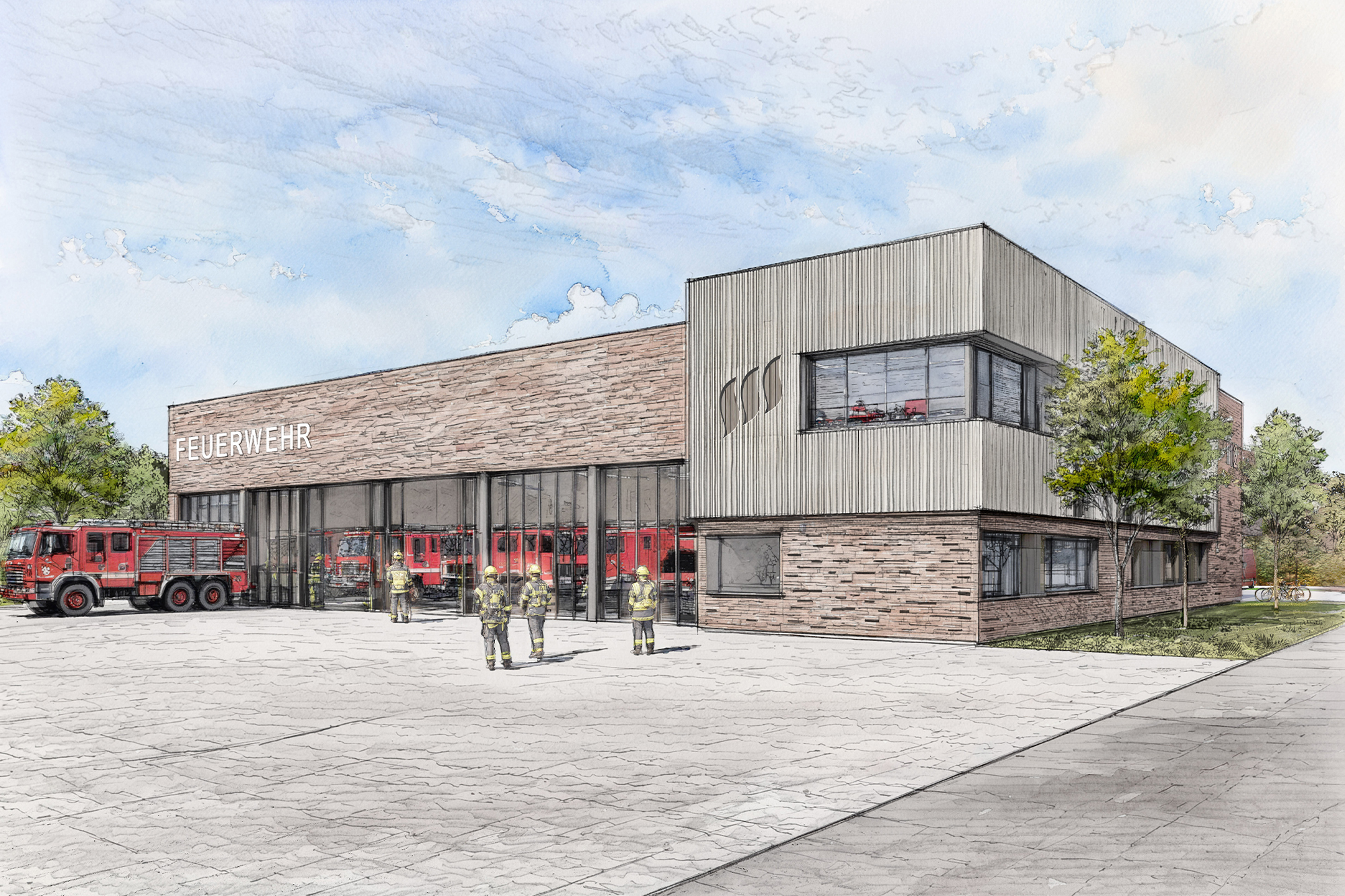

Between landscape and city - a fire station with a clear stance
The design for the north fire station in Haltingen combines functional clarity with precise, site-specific architecture. As a compact building, it forms a striking conclusion to the local structure and creates optimal conditions for efficient fire department operations.
Project data
Urban planning
The new northern fire station in the Haltingen district is being built on the eastern edge of the existing village. Due to its location directly on the road and in the vicinity of landscaped areas, the building is positioned as a striking but functional conclusion to the settlement structure. The clear, rectangular cubature is oriented towards the adjacent street line. The address is formed towards Eimeldinger Weg, with the building developing a restrained but independent presence thanks to its compact form. The location offers short distances for the arriving firefighters and allows a quick, unhindered exit in all directions, especially to the town center, in the event of an emergency.

Architecture and spatial organization
The architecture of the North Fire Station follows a clear, functional spatial concept with the vehicle hall as the central core. Changing rooms, workshops and storage rooms are logically arranged around it, creating efficient processes and short distances. On the upper floor, training, crew and recreation rooms with a terrace and gallery create an open, communicative environment for training and community.


Development
The development of the building follows a functionally clearly structured system that is designed for safety, efficiency and separation of traffic flows. The alarm exit of the vehicle hall leads directly onto Eimeldinger Weg. Car parking spaces are located at the rear of the building and are accessed via a separate access road. The emergency parking spaces for the emergency services provide direct access to the changing area via a separate entrance - without having to cross the administration or visitor flows. This separation of traffic routes enables rapid movement in the event of an emergency. A central access core with stairs and elevator ensures barrier-free vertical access inside the building. An additional staircase in the gallery area leads to the vehicle hall and serves both as a secondary escape route and as quick direct access.

Outdoor facilities
Aspacious training area directly connected to the training tower offers sufficient space for realistic training scenarios. The area is located in such a way that the alarm exit is kept clear at all times. The terrace area at the rear of the building offers a pleasant place to spend time during breaks, training sessions or events. The entire open space design avoids excessive sealing and takes into account the infiltration of rainwater. There is also a clear potential area for a future extension of the building in the direction of the washing area. The building can thus grow with the needs of the fire department without disrupting ongoing operations.

Materiality and construction
The fire station combines functional resilience with a clear design line: the first floor made of recycled exposed concrete and red glazed wood as well as the fiber cement base protect the heavily used vehicle hall, while the upper floor in timber frame construction and the vertical timber cladding create a harmonious appearance adapted to the surroundings.

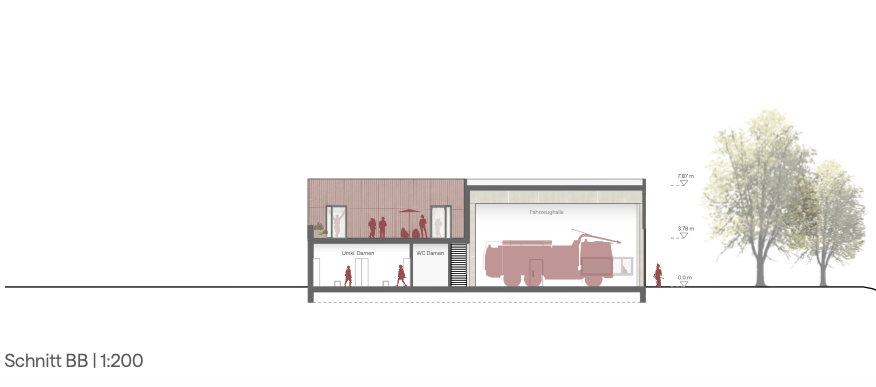

Sustainability
The sustainability concept focuses on resource-conserving materials, energy-efficient operation and ecological open space design. On the first floor, the fire station uses a robust wall construction system made of recycled concrete with timber cladding and a base made of fiber cement panels, which offers high durability with reduced use of raw materials. The upper floor is a timber frame construction. The renewable raw material wood not only enables a material-efficient, CO₂-saving construction, but also has a positive effect on the indoor climate.
Extensive green roofs help to retain rainwater, improve the microclimate and provide thermal protection. Photovoltaic modules provide a regenerative power supply. The open spaces are designed to minimize sealing. Infiltration areas, planting strips and greened joints promote water absorption and improve the microclimate.
Good design is no coincidence - it is a conscious decision.
{{quote="/team/christian-gaus"}}



